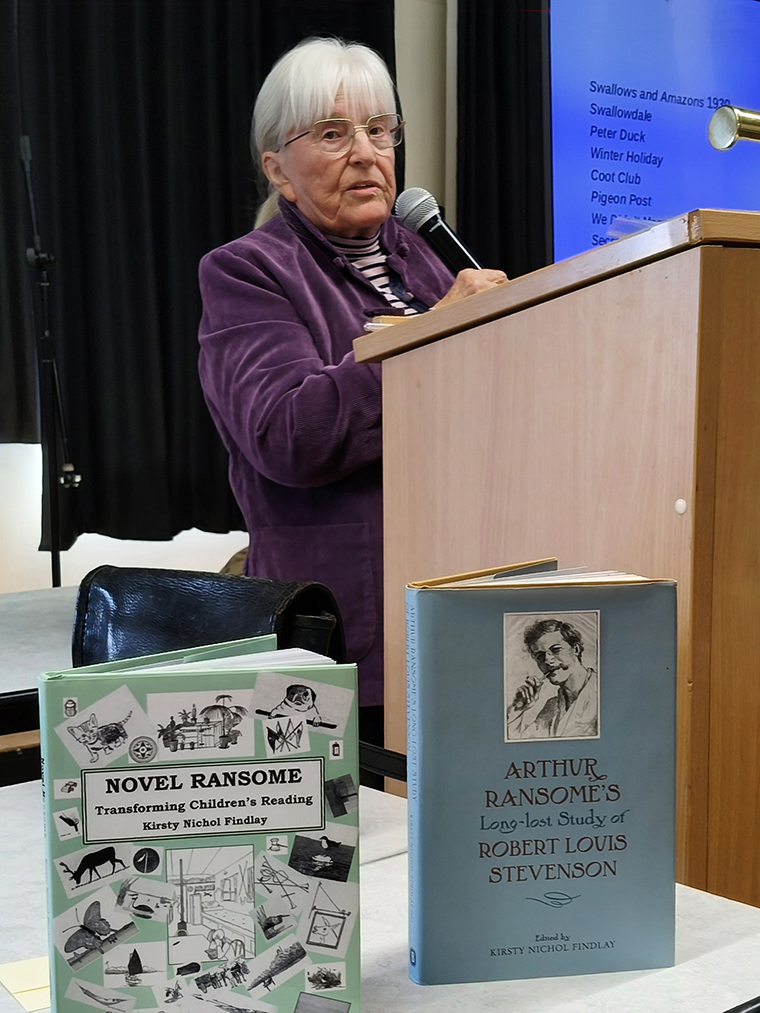The South Wairarapa Rebus Club was honoured to welcome back our guest speaker, Greytown’s Dr Kirsty Findlay, to expand on her August presentation on the life and works of Arthur Ransome: literary critic; author of the twelve Swallows and Amazons novels; witness and journalist to the Russian revolution and journalist in 1927 post-revolutionary Republic of China.
Arthur Ransome’s trunk, inherited by Leeds University after his death, is described as a large cabin trunk with tattered steamship labels, identifying it as the real-life counterpart of Captain Flint’s trunk from Swallows and Amazons and pointing to Ransome himself as his model for Captain Flint. Inside the trunk was a wealth of old logs, diaries, photographs and sketchbooks which provided clues to the reality behind the stories—not only the geography but also the children he knew who had sailed with him. The fictional Walker children, the four Swallows, were based on the children of Armenian Ernest Altounyan, an old school friend, married to Dora Collingwood, to whom Ransome had once proposed marriage. The family, who lived in Aleppo, Syria, had renewed their friendship with Ransome during a summer visit to the Lake District in 1928. They bought two boats for the children, named Swallow and Mavis, and the group spent months sailing, fishing and walking together.
Kirsty brought Ransome’s long lost critical study of Robert Louis Stevenson to publication in 2011. This was the first publication of a book originally commissioned in 1910. The manuscript, nearly complete, was sequestered by Ivy, Ransome’s first wife, in 1914 and he never saw it again. It came to light in 1990 by chance, revealing his personal and perceptive account of the strengths and weaknesses of Stevenson as man and writer. The result is a fascinating exposition of the writer who was to remain Ransome’s lifelong inspiration. Here he identifies Stevenson’s literary techniques that later underpin his Swallows and Amazons series.
Kirsty was the second author to work on the manuscript and the first to succeed in transcribing and logically piecing together 387 handwritten pages, not consecutive and mostly unnumbered. Some were almost indecipherable. She needed to read all of Stevenson’s published work in order to understand and interpret Ransome’s response. Previously two of Ransome’s literary executors had spent 10 years trying to reconstruct the manuscript without success!
The South Wairarapa Rebus Club meets at 9:45am on the fourth Friday of each month at the South Wairarapa Working Men’s Club in Greytown. The club prides itself on the quality of its guest speakers. Reviews of previous talks are included in newsletters which can be found on the club’s website: <southwairaraparebus.com>. Retirees are invited to attend a meeting as a visitor. Introduce yourself at the door from the West Street carpark, or contact John Reeve on 021 560 461 for more information.



